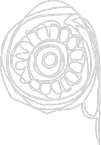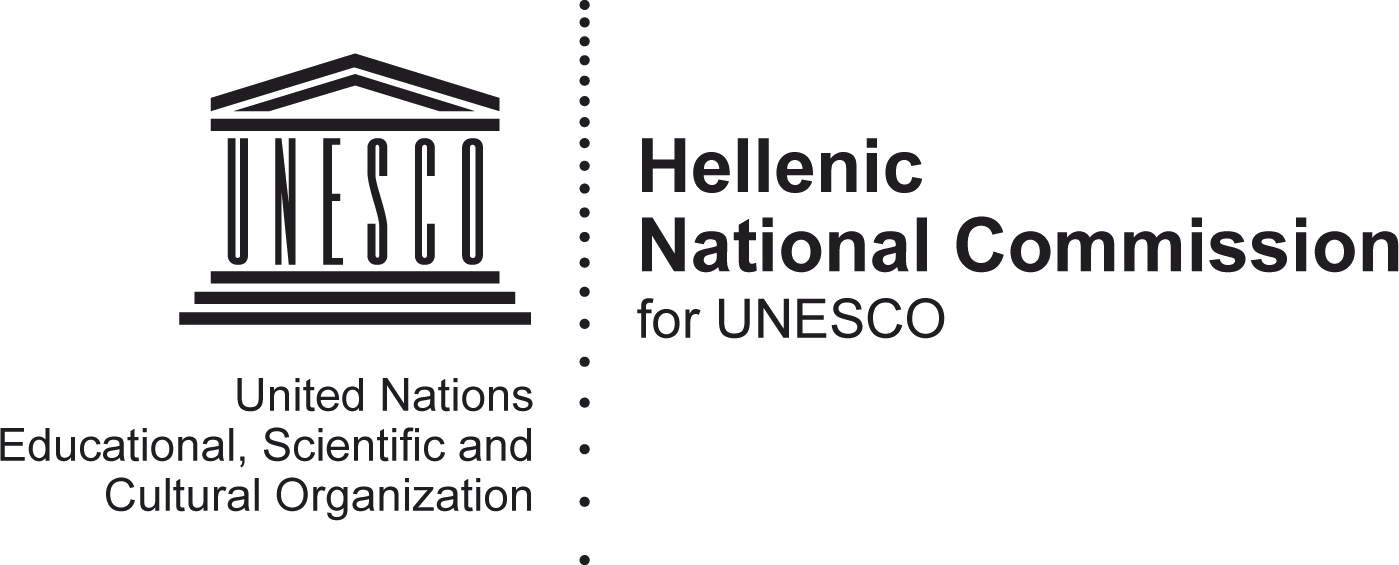Currently, research on all aspects of antiquity is assisted by an increasing patrimony of resources available for consultation on the World Wide Web. This page aims to assemble a representative selection of the wide range of online works of reference, bibliographic databases, electronic journals, search engines, and digital collections of data and data sets of usefulness for the study of the ancient Iranian and Greek archaeological, epigraphic, numismatic, and historical subjects covered by the project.
Achemenet
Achemenet is the project of reference for Achaemenid studies worldwide. Conceived by Pierre Briant upon his appointment at the Collège de France in 1999, Achemenet aimed initially at the collection and diffusion of documentary evidence about the Achaemenid world. It has evolved into a vast international collaborative project with the creation in 2002 of a CNRS team (Réseau International d’Études et de Recherches Achéménides), as well as the regular organization of colloquia, inauguration of a specialized monograph series (Persika) and online journal (ARTA: Achaemenid Research on Texts and Archaeology), and collaboration with the journal NABU: Nouvelles Assyriologiques Brèves et Utilitaires. As of 2012, Achemenet, including the Achaemenid library created by Pierre Briant since 2002, continues to be developed under the aegis of an International Scientific Committee.
American Numismatic Society
‘The American Numismatic Society is an organization dedicated to the study of coins, currency, medals, tokens, and related objects from all cultures, past and present. The Society's headquarters in New York City has the foremost research collection and library specialized in numismatics in the United States. These resources are used to support research and education in numismatics, for the benefit of academic specialists, serious collectors, professional numismatists, and the interested public.’
AWOL: The Ancient World Online
‘AWOL is an extension to Abzu, the pioneering guide to networked open access data relevant to the study and public presentation of the Ancient Near East and the Ancient Mediterranean world. AWOL is now firmly established as the primary vector of information on digital and digitized antiquity, with more than seven thousand subscribers to its daily update and more than three thousand unique visitors daily over the past year. It indexes and describes more than twenty existing and emerging scholarly resources each week, and its running list of open access serial publications includes over sixteen hundred titles. It regularly lists emerging and existing digital projects, and it publicizes repositories of digitized scholarship relating to antiquity with a cumulative content of thousands of volumes.’
Bibliographia Iranica
‘Bibliographia Iranica (the website and connected social media) is a collective effort to share and distribute information on recent publications and events in Iranian Studies, understanding the field in its broadest sense from antiquity through late antiquity and the early Islamic era, with occasional excursions into neighbouring disciplines, geographies and eras. The project is operated by Sajad Amiri, Shervin Farridnejad (FU Berlin), Yazdan Safaee and Arash Zeini.’
The Cambridge History of Iran
‘The Cambridge History of Iran is a multi-volume survey of Iranian history and culture, and its contribution to the civilization of the world. All aspects of the religious, philosophical, political, economic, scientific and artistic elements in Iranian civilization are studied, with some emphasis on the geographical and ecological factors that have contributed to that civilization's special character.’
Encyclopædia Iranica
‘The Encyclopædia Iranica is a comprehensive research tool. Collectively its entries aim to provide a wide-ranging study of Iranian civilization in the Middle East, the Caucasus, Central Asia, and the Indian subcontinent as well as its interaction with other cultures and civilizations in different historical periods.’
Online Greek Coinage
‘Online Greek Coinage is an international project with the goal of creating an ecosystem for the presentation of Ancient Greek Coinage on the World Web, drawing on a number of Linked Open Data resources.’
Parthia.com
‘Parthia.com is a noncommercial educational web site about the Parthians and their sub-kingdoms of Characene, Elymais and Persis. While the primary focus is on numismatics, the site is more than a virtual coin collection. It also provides information about Parthian art, history, archaeology, geography and more. It is an excellent resource for locating books, articles, maps and other materials for further study. Launched in 1998, Parthia.com has grown to more than 1,600 web pages and 18,000 photos about Parthia.’
Pelagios Commons
‘Pelagios Commons provides online resources and a community forum for using open data methods to link and explore historical places.’
PELLA
'The current version of PELLA provides links to examples of the coinage (in the name) of Alexander the Great and Philip III Arrhidaeus present in the ANS collection, the Münzkabinett of the State Museums of Berlin, the British Museum and the Harvard Art Museums.'
The Persepolis Fortification Archive Project at the Oriental Institute of the University of Chicago
‘The Persepolis Fortification Archive, excavated in 1933, consists of tens of thousands of clay tablets and fragments bearing texts in Elamite, Aramaic and other languages and impressions of thousands of distinct seals. The Archive, compiled by an administrative unit operating in the region around Persepolis in the years around 500 BC, is the richest single source of new information about the languages, institutions, society, religion and art of the Achaemenid Empire at its zenith.
The aims of the Persepolis Fortification Archive Project are to compile comprehensive records of the Archive and to distribute the records freely on line. Basic cataloging information, conventional and high-resolution digital images, text editions, glossaries, grammatical parses, records of seal usage, seal drawings, etc., are available via the Online Cultural and Historical Research Environment (OCHRE). High-resolution images are also available via InscriptiFact.
Researchers should bear in mind that the on-line information reflects ongoing work made available at varying degrees of finish and accuracy, ranging from published editions (e.g., PF texts, some seal drawings) to first-draft editions (e.g., Fort. texts) and incomplete glossaries.
Occasional information and related publications are available at http://persepolistablets.blogspot.com/. Annual reports are available there and at http://oi.uchicago.edu/research/projects/persepolis-fortification-archive.’
Pleiades
‘Pleiades is a community-built gazetteer and graph of ancient places. It publishes authoritative information about ancient places and spaces, providing unique services for finding, displaying, and reusing that information under open license. It publishes not just for individual human users, but also for search engines and for the widening array of computational research and visualization tools that support humanities teaching and research…’
Sasanian Seals from the Collection of the Late Edward Gans at the University of California, Berkeley
‘Guitty Azarpay’s project on the Sasanian Seals from the Collection of the Late Edward Gans at the University of California at Berkeley is the first on-line publication of its kind, undertaken by Lewis Lancaster at the University of California at Berkeley as a part of the Electronic Cultural Atlas Initiative (ECAI) . The project has since invited on-line additions and revisions of the content by a number of specialists. See further Guitty Azarpay, A Catalog of Sasanian Seals from the Edward Gans Collection at the University of California, Berkeley, Electronic Publication with Graphics published by ECAI, University of California, Berkeley 2001, accessed at: http://ecai.berkeley.edu/sasanianweb .’
Sasanika
‘The Sasanika Project is an online database which aims at collecting and studying all aspects of the Sasanian Empire (224-651 CE). The project includes research and graduate student articles, along with documentation from the period, including the Greco-Latin sources, as well as the study and presentation of the material culture.’
Sylloge Nummorum Parthicorum
‘The International Parthian Coin Project, the Sylloge Nummorum Parthicorum (SNP), brings together institutions with major holdings of Parthian coins. These are the British Museum, the Kunsthistorisches Museum in Vienna, the National Museum of Iran, the Bibliotheque nationale de France, the Staatliche Museen zu Berlin and the American Numismatic Society in New York. The private collection of the late David Sellwood is also included in the project. The Sylloge Nummorum Parthicorum is directed by Dr Michael Alram (Vienna) and Dr Vesta Sarkhosh Curtis (London) working together with a team representing the various institutions. A purpose-built database www.sylloge.org is run by Chris Hopkins in the US.
Each institution will produce one or two volumes of the Sylloge Nummorum Parthicorum. In 2012 the Austrian Academy of Sciences published SNP Volume 7 by Fabrizio Sinisi, Vologases I – Pacorus II. This serves as a model for all future publications in the SNP series, which will provide the first systematic reconstruction of Arsacid coinage relying on the above-mentioned collections.
The aim of the project is to use coins as an important primary source to shed light on the history, culture and religion of Iran and modern Iraq from c. 240 BC – AD 224. Although the Iranian Parthians inherited Hellenistic culture from the ruling Seleucids in the region, they were instrumental in reviving ancient Iranian traditions which were passed on to the Sasanians who came to power in AD 224.’
Thesaurus Indogermanischer Text- und Sprachmaterialien (TITUS)
‘Founded by a group of Indo-Europeanists in 1987, the TITUS project aims at the compilation of a comprehensive text database of ancient Indo-European languages that were not covered by concurrent projects, such as the Thesaurus Linguae Graecae. Today, the TITUS database comprises not only corpora of ancient Indo-European languages, many of them covering the complete textual heritage of the languages involved (among them Old Persian, Avestan and Middle Iranian languages), but also materials in more recent Indo-European as well as neighboring languages.’
Thesaurus Linguae Graecae (TLG)
‘The Thesaurus Linguae Graecae (TLG®) is a Special Research Program at the University of California, Irvine. Founded in 1972 the TLG® represents the first effort in the Humanities to produce a large digital corpus of literary texts. Since its inception the project has collected and digitized most texts written in Greek from Homer (8 c. B.C.) to the fall of Byzantium in AD 1453. Its goal is to create a comprehensive digital library of Greek literature from antiquity to the present era. TLG research activities combine the traditional methodologies of philological and literary study with the most advanced features of information technology.’


